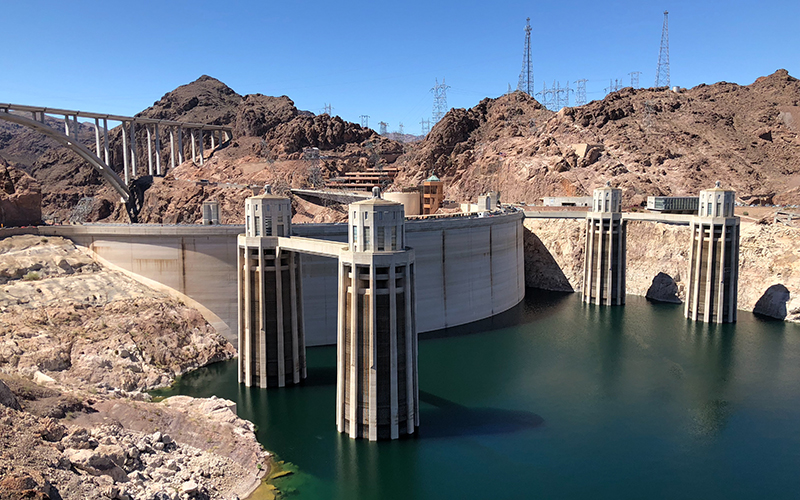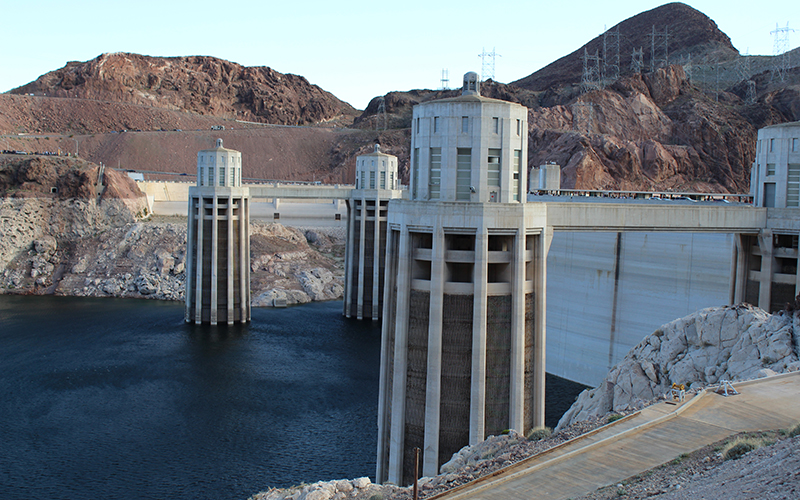PHOENIX – In early December, after months (some would say years) of tough negotiations, the Central Arizona Project board approved a framework for the state’s internal Drought Contingency Plan, which outlines how expected reductions in water deliveries would be decided. Pinal County farmers expressed concern, however, because money to help them build groundwater infrastructure was left up in the air.
Attorney Paul Orme, who represents many of those farmers, said this to the CAP board:
“It’s going to require participation by all for us to have the comfort level of, in one month from now, basically having to tell our Pinal County legislators, yes, this is something we should support.”
And that’s what Arizona’s internal Drought Contingency Plan needs – various groups telling their legislators they can support the deal. Lawmakers then can give the head of the state water department the authority to sign it. Arizona is the only one of the seven Colorado River Basin states that requires legislative approval of its drought plan.
Many stakeholders in Arizona support the framework for water cutbacks, including Gov. Doug Ducey. A few big issues remain, such as infrastructure money for Pinal County farmers.
But another big question looms: Can 90 lawmakers be quickly educated on water policy, which is a complex world of laws, contracts, priorities and acronyms? And in just a few weeks before the federal Bureau of Reclamation imposes its own drought plan, which no one wants to see happen.
“You have to think about legislative leadership, and how they exercise their responsibilities,” said Kevin Moran with the Environmental Defense Fund. A coalition of non-governmental environmental organizations he works with are chipping in $8 million toward the drought plan.
“You have to think about 90 members of the state Legislature. And on an issue of this consequence, one has to think about engaging and educating all 90.”
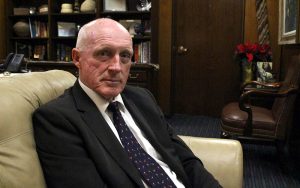
House Speaker-elect Rusty Bowers, a Republican from Mesa and a longtime ally of agriculture, says he understands the urgency of creating a drought plan but will not be rushed to take action. (Photo by Bret Jaspers/KJZZ)
It is a daunting challenge. But a few lawmakers are more than up to speed. Arguably, the member most engaged on water happens to be one of the most powerful: House Speaker-elect Rusty Bowers, a Republican from Mesa and a longtime ally of agriculture.
In the upcoming session, Bowers will assign bills to committees and decide when to put them on the floor for a vote. Or not. In an interview in December, Bowers said he won’t rush.
“There are things that everybody wants,” he said. “But most of all, everybody just wants a plan. And I think it’s almost like we’re being panic-driven. This is not a panic. There’s water available.”
Bowers acknowledges the problems on the Colorado River but said there’s water available from many sources, not just the Colorado. And he wants legislators to talk about all of them – the whole picture.
For example, he said, he intends to ask cities “in very pointed ways” to hold off on ordering all the water they’re currently entitled to, making more available to farmers.
“Ordering is not need,” he said.
Valley cities say they order water to store it underground for the future, when other sources may be inconsistent.
“This is the deal and time is running out,” said Warren Tenney, executive director of the Arizona Municipal Water Users Association. “Attempts to modify the terms, including asking for additional water from residents and businesses in Maricopa County, threaten the deal and the entire state.”
Really, any kind of negotiating during the session would make a lot of people nervous.
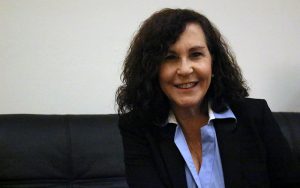
State Sen. Lisa Otondo, D-Yuma, says the framework of Arizona’s Drought Contingency Plan is far from perfect, “But it’s better than what would be handed to us by the feds.” (Photo by Bret Jaspers/KJZZ)
“If the DCP (Drought Contingency Plan) shows up and people want to start attaching things and a companion bill starts getting all kinds of amendments, we will have every stakeholder running around here, attaching their interests on here,” said state Sen. Lisa Otondo, D-Yuma. Like Bowers, she has been part of Arizona’s Drought Contingency Plan Steering Committee.
“Nobody likes it,” Otondo said of the framework. “But it’s better than what would be handed to us by the feds.”
If the DCP doesn’t get signed in all seven Colorado Basin states, and soon, the federal government has said it will put other wheels into motion. Lake Mead, the main reservoir for the lower basin of the Colorado River, is at an alarmingly low level. Climate change and over-allocation have dropped it to 38 percent capacity.
An official “shortage” declaration is more than likely by 2020, which already means cutbacks for the basin states under a previous agreement. The DCP is an attempt to take additional cuts ahead of time to stave off even deeper drops in Lake Mead.
At the annual conference of the Colorado River Water Users Association in mid-December, Reclamation Commissioner Brenda Burman gave the basin states a deadline of Jan. 31. Utah, Colorado, New Mexico, Nevada and Wyoming have approved plans; Arizona and California have not.
“If the states are not done, we will post a Federal Register notice. And that Federal Register notice will ask the seven basin states to provide within 30 days recommendations to the secretary of how the secretary should act,” she warned.
State Sen. Sine Kerr, R-Buckeye, was at the Las Vegas conference where Burman issued the deadline.
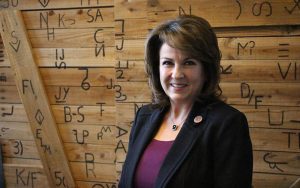
State Sen. Sine Kerr, R-Buckeye, who’s also a dairy farmer, worries that the Jan. 31 deadline set by the Bureau of Reclamation will force Arizona to act more quickly than is wise. (Photo by Bret Jaspers/KJZZ)
“After I caught my breath, I was trying to think (how) do we physically, you know, make this happen?” said Kerr, a dairy farmer who is chair of the Senate Committee on Water and Agriculture. “With the time crunch that we have now, our deadline, I think to have the best success, I think we need to keep it as intact as we can.”
Kerr noted Arizona is the only state that needs legislative approval to sign the DCP. The legislative session starts Jan. 14, less than three weeks before Burman’s deadline.
Bowers, however, wants the Legislature to be able to digest and debate any agreement, noting that millions of Arizonans rely on the Colorado River in some form or another.
“Rushed legislation often leads to unintended consequences, and on an issue as momentous as Arizona’s water future, we’re going to take the time we need to do our due diligence,” he said in a statement after the deadline announcement.
Bowers knows the Bureau of Reclamation has a job to do. But so does he.
This story is part of Elemental: Covering Sustainability, a multimedia collaboration between Cronkite News, Arizona PBS, KJZZ, KPCC, Rocky Mountain PBS and PBS SoCal.
Follow us on Twitter.
